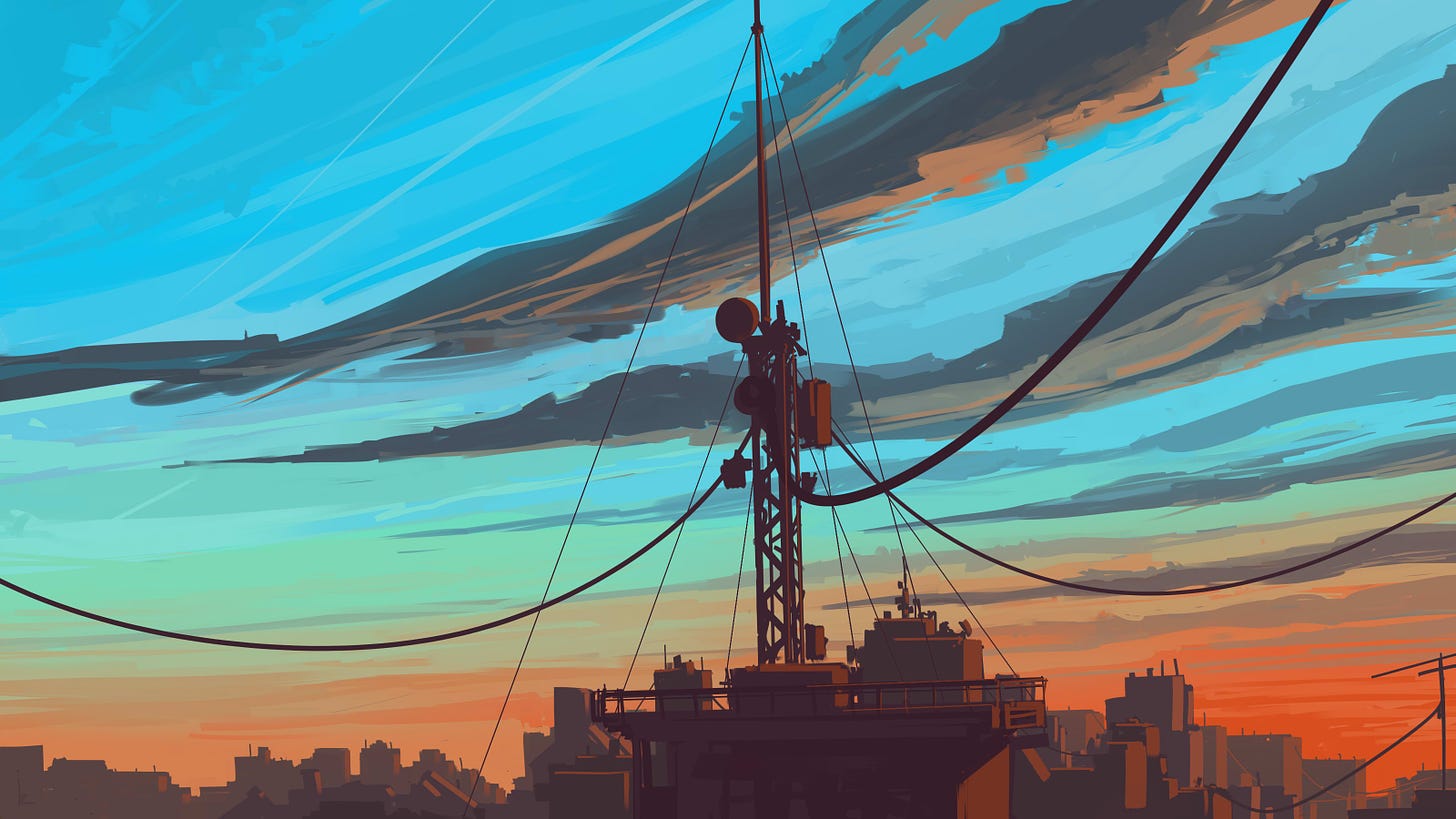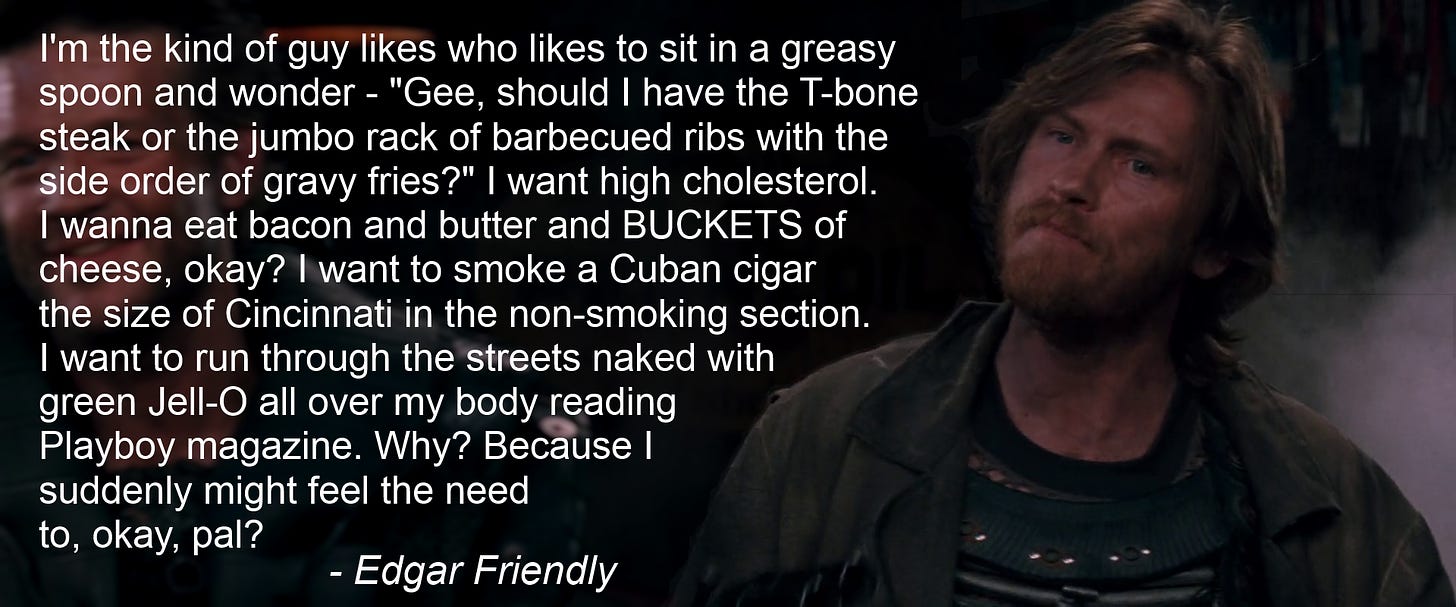Honestly, I never expected the reaction to issue 4. I was shocked, and I’m humbled. If you’re new, welcome. I asked Twitter what to write next. Twitter wants the Dune piece I’m working on. I’m a massive Dune geek. It’ll be a little while longer before it’s ready.
If you’re reading online and not a subscriber, the box below can change that for you.
I want to show you a community that grabbed my attention a while back. As with almost everything in life when you think about it, it was all Stevie Nicks’ fault. So to start with, here’s dreams by Fleetwood Mac. Click play and read on.
Tilde sites are great but I dislike too many text screenshots. I thought I’d feature some of Alexey Shirokikh’s incredible concept art. If you like it, consider buying some.
Tilde Sites - Geocities 2.0, or SDF for the 2020s?
One well-refreshed night in 2014, Paul Ford had been reading a 2004 post by Stevie Nicks and wondered what all the tilde symbols were about.

“That’s a west coast thing,” said Mo, who grew up in California. “You use tildes instead of colons or dashes, it’s more like handwriting.”
After posting about this on Twitter, a friend wrote back about how “tildes are only ever properly used in front of usernames on shared hosting.”

If you’ve ever used shared hosting you might be familiar with tilde symbols in paths. These signify personal web spaces connected to user accounts on the same system. They were popular throughout the 90s and early 2000s. Some shared hosting came with other services such as shells and email, one of the best of which (still going) is sdf. I’ve run and been on a few shared servers over time. With cloud computing and decent broadband the need for them today isn’t quite the same.

Paul registered tilde.club, offered a free shell acount to anyone who asks for one and went to bed. He woke up to 100 requests for accounts. Over time Tilde.club grew and ended up with a waitlist. The server was hacked, it was crashed, all kinds of mad stuff happened. People created sites, and made things. It was beautiful. As Paul describes it:
Tilde.club is one cheap, unmodified Unix computer on the Internet.
Maybe it was the waitlist, something happened. More tilde sites popped up. Some based on geography, subjects, literature, and technology. More generalised cheap, unmodified Unix (and even Windows) computers appeared on the Internet. These sites built wonderful, open, free to use services. They linked their tilde sites together into a tildeverse and more. Not all tildes are part of the tildeverse, but plenty are.

If the walled gardens of commercial social media are The Matrix, then the Tildeverse is Zion in all it’s filth, freedom and glory. If Facebook is a three-sea-shelled San Angeles, the Tildeverse is where the scraps live, they’re all out of sea shells, and it’s home of the best digital rat-burgers this side of Taco Bell.

Exploring the Tildeverse and Beyond
The Tildeverse zine is as good a starting point as any. Issue 1 breaks down common services across the Tildeverse. Tilde.chat is the social hub for the tildeverse. People use Tilde sites to learn HTML and javascript, scripting and use tools such as IRC, UUCP and Usenet. Subsequently, some of the sites have a deliberately web 1.0 feel. Others are more modern, and a little bizarre in places.

Off the beaten track things get a little quieter, but there are still gems to explore. Don’t forget there are plenty of handy services, some of which are on the fediverse. If it seems a little overwhelming or sprawling, take a break and have a cup of tea. It’s not commercial. Like The Dork Web, the Tildeverse cares not for your clicks.
Things You Might Have Missed
The final issue of The Classic Adventurer is now out. If you ever loved Text Adventures, this is a goldmine. Curious Marc recovers data from 8-inch floppies for a group of paleontologists. Yeo Kheng Meng looks into the lowest spec 486 that the modern Linux kernel will run on. Checkpoint have a cool piece on a Nigerian fraud campaign.
The HitchHiker’s Guide To The Galaxy is 42. Sometimes I wonder if we really are B Ark descendents. TikTok is censoring “ugly people” and the poor. In shocking news, Brave has accused Google of using hopelessly vague privacy policies. Of course, Google says they don’t sell your data, but the EFF has a piece on how they monetize and exploit it.
The world's studded with artificial mountains made from slag heaps. If that’s not a metaphor for what we’ve done to the world…
I found out about the brilliant Meshtastic and immediately went shopping. It may take time to arrive. These NFC-powered (look ma, no battery!) 4.2” and 7.5” e-paper displays look very tempting.
mylordshesacactus wrote a fascinating piece on Titanic rescue ship RMS Carpathia.
You might know about the Italian hospital that 3d printed ventilator parts. A Oxford University and Kings College London team are designing ventilators from parts already likely to be available in hospitals. Meanwhile an Irish team have submitted their rapidly designed ventilator prototype to a validation process by the Irish Health Service Executive.
If you’re struggling to keep track of your shopping but don’t want to hand your data over to an online service, Grocy might be useful. If like me, you don’t trust Zoom for web conferences, Jitsi Meet is the alternative to try. Seriously, it’s just as good, pretty private, can be self hosted and is free to use without install. I’ve been running remote movie nights with Neko and Plex. My experience hasn’t been completely flawless but so far it’s been pretty good.
This emotion control headband is the worst kind of sticking plaster. Gabe Newell believes we’re closer to Matrix-style Brain Computer Interfaces than people think. Merging the two concepts leads me to this: Imagine a world without human rights but Netflix-style emotional state streaming. What does it look like?
NASA’s Mars Insight lander had problems, so they instructed it to hit itself with a shovel. Meanwhile, Atlas Obscura writes about how Soviet science magazines fantasized about life in outer space. If you like the art and you’re on Twitter @SovietVisuals is the account to follow.
The Fake Science newsletter looks promising, if surreal. More real, but no less surreal, a group of London-based Cyberpunks/Instagram models (is there a difference anymore?) are using face painting to subvert facial recognition systems. John Ohno sends dispatches from an infected future.
In SolarPunk news, a quiet rewilding revolution is taking place across Britain’s roadsides. Shareable has a piece on how communities collaborate during disasters, something at the time of writing I’m very much preparing for. Slate asks, “What if competition isn’t as natural as we think?” Continuing the punk in SolarPunk theme, Richard Reynolds and others are rewilding parts of London through Guerilla Gardening.
Lets end on a happy note, looking back at better times when David Hasselhof would rap about Pingu.
If you sat through all of that I can only apologise. But a word from Mr Rogers himself:
Mr Rogers, the best neighbour we could’ve had once said:
When I was a boy and I would see scary things in the news, my mother would say to me, "Look for the helpers. You will always find people who are helping.”
I hope you liked this issue. The next one will be themed, hopefully the Dune one. If you could share The Dork Web with someone who may find it interesting, please do. Either way, I’ll be back in your inbox soon with some more Tales From The Dork Web.
from Hacker News https://ift.tt/2UQNhlV
No comments:
Post a Comment
Note: Only a member of this blog may post a comment.